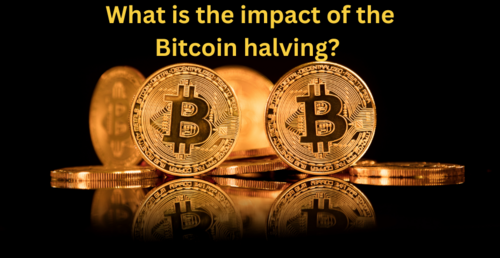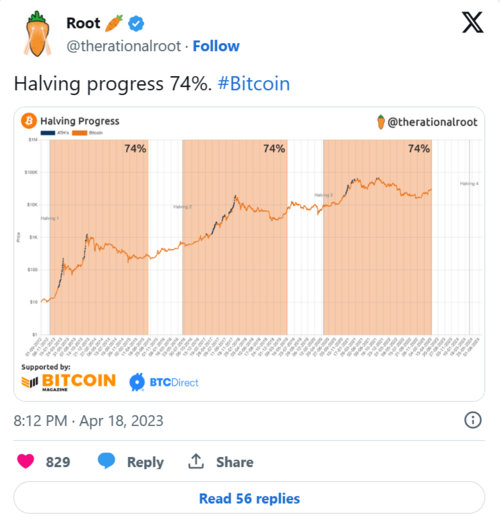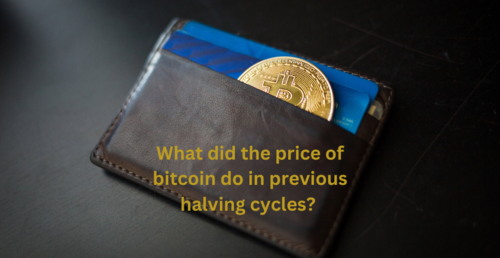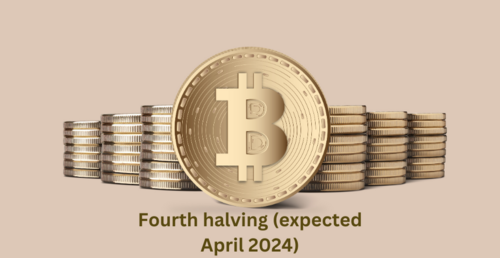
Bitcoin halving is one year away, what does it mean for the price?

Roughly every four years, bitcoin rewards paid to miners are cut in half as a way to ensure that an infinite supply of bitcoin doesn’t erode its value further down the line. These events are known as Bitcoin halvings, and each event has historically had a major impact on the price.
The first halving saw price increases of more than 8,000% from pre-halving levels. Bitcoin’s value also increased roughly 3,000% over the second halving cycle in 2016. The last halving in 2020 was followed by a bull run that ended in an all-time high price of almost $69,000.
Will the fourth halving in April 2024 deliver the same results?
The law of supply and demand dictates that an asset with a limited supply can generally be considered more valuable than if its supply were infinite.
This is true of gold, diamonds, art, and, in theory, some cryptocurrencies as well. There will only ever be 21 million bitcoin in circulation, and no new coins will be minted when this limit is reached in the year 2140.
If demand for bitcoin continues to go up as it has in the past, the limited supply will drive up prices as investors are willing to pay more for remaining coins.
The creator(s) of Bitcoin intimated their political reasons for the creation of the protocol by leaving a clue in the first block mined, a headline from a newspaper article reading, “The Times 03/Jan/2009 Chancellor on brink of second bailout for banks.” Could bitcoin’s capped supply be seen as an antidote to government monetary policies that often lead to inflation? Many believe so.
“The purpose of halving is to maintain the scarcity of Bitcoin and prevent inflation,” notes the Blockchain Council. “This scarcity is one of the reasons why Bitcoin is often compared to gold as a store of value.”
JP Morgan said in a recent note that next year’s halving has led to renewed investor interest in the coin. “[The halving] would mechanically double bitcoin’s production cost to around $40,000, creating a positive psychological effect,” the bank noted, explaining that BTC’s production cost has historically acted as an effective lower boundary to its price.

Miners verify one block of transactions on the blockchain every 10 minutes and receive 6.25 BTC as a reward. The halving in 2024 will cut rewards to 3.125.
Market psychology also comes into play. Once the deflationary narrative of the event catches on and more people buy bitcoin, it leads to more demand, which further limits supply. As Bitcoin Magazine writes, “Our primary thesis is that the halving leads to a demand-driven event in bitcoin, as market participants become acutely aware of bitcoin’s absolute digital scarcity.”


In the past it’s taken a while for markets to digest halving events, often seeing a delay of six to 12 months between the event and a notable increase in price.
Below we’ve noted the BTC price at the time of the halving and the peak in the year following the event. These highs were often interrupted by price fluctuations and didn’t necessarily remain at these elevated levels. One certainty is that up until now BTC has never recorded a decrease in value from one halving to the next.
Rewards halved: 50 to 25
Price at halving: $12
BTC high the following year: $1,152
Rewards halved: 25 to 12.5
Price at halving: $650
BTC high the following year: $19,118
Rewards halved: 12.5 to 6.25
Price at halving: $8,500
BTC high the following year: $67,549

Long-term investing is all about patience and discipline. The goal is to invest in companies, funds or cryptocurrencies that have a strong track record of performance and growth.
While bitcoin has seen its share of serious ups and downs since 2009, the price has continued to surge upwards from one halving cycle to the next. Investors and analysts often say that history doesn’t repeat but it rhymes. Historically, the Bitcoin halving has been no exception, will it continue on the same trajectory in the future?
The halving is written in the software that runs the Bitcoin network.
The Bitcoin halving occurs every 210,000 blocks mined on the blockchain. Bitcoin is designed to automatically adjust the difficulty of mining new blocks in response to how many miners are active on the network. The reasoning behind this is to ensure that new blocks are added to the chain at a constant rate of one block every 10 minutes. This means it’s impossible to pinpoint an exact date for the next halving event, but at current rates it’s expected to happen around the end of April 2024.
The first Bitcoin halving occurred at a block height of 210,000. The second at 420,000, and the most recent halving at a block height of 630,000. The next halving is set to happen at block number 840,000.
Apart from price fluctuations, the halving does not affect the amount and nature of BTC you own.
After 21 million coins have been mined, miners will be rewarded with network fees. The busier the network, the more they will be paid for mining. ( to mine, click HERE)
Yes. In theory, and as has been true in the past, price increases coupled with each halving balances out the losses from reward slashing. Mining technology has over the years become more efficient and cheaper to run, and this evolution is expected to continue in future.
Andries van Tonder
I am a Serial Entrepreneur & Investor with over 40 Years of experience in Business and Marketing.
Business is my passion and I have established myself in multiple industries with a focus on sustainable growth
Looking for the Worlds Leading Social Market Network, Built on Blockchain?
You have found the perfect place here at Markethive.
Come and join me. Click the banner below:
